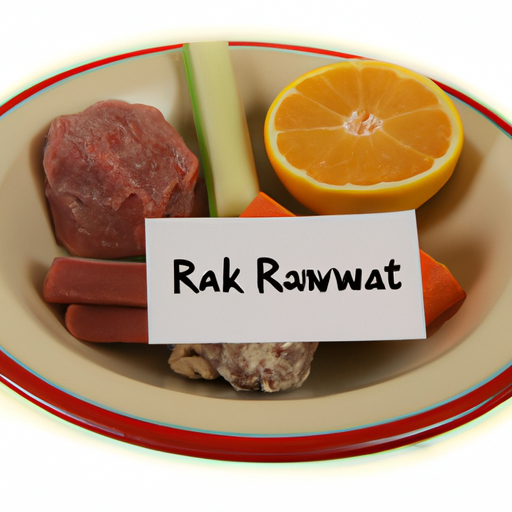Understanding Raw Food Diets
You might be wondering, what exactly is a raw food diet for dogs? As a caregiver for your pet, it’s crucial to understand the ins and outs of their diet. A raw food diet, often referred to as Biologically Appropriate Raw Food (BARF), typically includes a variety of raw meats, bones, fruits, and vegetables.
Here’s a simple breakdown:
- Raw Meat: The bulk of a raw food diet is made up of raw, uncooked meats. This can include muscle meat, often still on the bone, and organ meats like liver and kidneys.
- Bones: Both whole or ground bones are a crucial part of the diet.
- Fruits and Vegetables: Raw food diets also incorporate a variety of fruits and vegetables. These can range from leafy greens like spinach to apples, berries, and even peppers.
The Benefits of Raw Food
As a caregiver, you understandably want the best for your pet. Feeding raw food can have several benefits for your furry friend.
- Improved Coat Health: Many pet owners report a shinier, healthier coat after switching to a raw food diet.
- Better Dental Health: Chewing raw bones can help keep your dog’s teeth clean and healthy.
- Increased Energy: A raw food diet can provide a natural energy boost for many dogs.
Potential Risks of Raw Food
While there are many benefits, it’s also important to understand the potential risks associated with a raw food diet.
- Bacterial Contamination: Raw meat can carry bacteria like Salmonella and E. coli, which can cause serious illness in both pets and humans.
- Balanced Nutrition: It can be challenging to ensure your dog is getting all the necessary nutrients from a raw food diet.
Transitioning to a Raw Food Diet
Switching to a raw food diet isn’t something you should do overnight. It’s a process that should be done gradually to avoid digestive upset.
- Start Slow: Begin by slowly introducing raw food into your dog’s regular diet.
- Monitor Your Dog: Watch for any signs of digestive upset and adjust the diet as necessary.
- Consult a Vet: It’s always a good idea to consult with a vet before making any drastic changes to your dog’s diet.
Raw Food Diet: A Sample Menu
To give you a clearer picture, here’s a sample menu for a dog on a raw food diet:
| Meal | Content |
|---|---|
| Breakfast | Raw chicken (with bones) and a handful of blueberries |
| Lunch | Beef liver and a mix of spinach and carrots |
| Dinner | Ground lamb, an apple, and a raw bone for chewing |
FAQ
Q: Is a raw food diet suitable for all dogs?
A: Not necessarily. Some dogs may have dietary restrictions or health conditions that make a raw food diet unsuitable. Always consult with a vet before changing your dog’s diet.
Q: Are there ready-made raw food diets available?
A: Yes, there are many pre-packaged raw food diets available that can make the transition easier.
Q: Can I feed my dog raw bones?
A: Raw bones can be a good source of calcium and phosphorus for dogs. However, never feed your dog cooked bones, as they can splinter and cause harm.
Q: Can my dog get sick from eating raw meat?
A: While there is a risk of bacterial contamination, proper handling and sourcing of raw meat can reduce this risk. Always handle raw meat with care to avoid cross-contamination.



